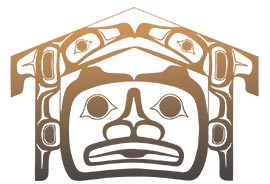The collections currently comprise approximately 12,000 items including about 6,000 books, 450 videos, 5,000 vertical file materials, curriculum resources, journals and newspapers, maps, posters, theses and dissertations, the G.A. (Bud) Mintz special collection, and some archival materials. The collections focus on First Nations in British Columbia, including contextual materials on Canadian First Nations, in addition to issues of national and international interest to First Nations and Indigenous peoples. X̱wi7x̱wa collects materials written from First Nations perspectives, such as materials produced by First Nations, First Nations organizations, tribal councils, schools, publishers, researchers, writers and scholars.
Featured collections
Spotlight: Indigenous Disability Awareness Month
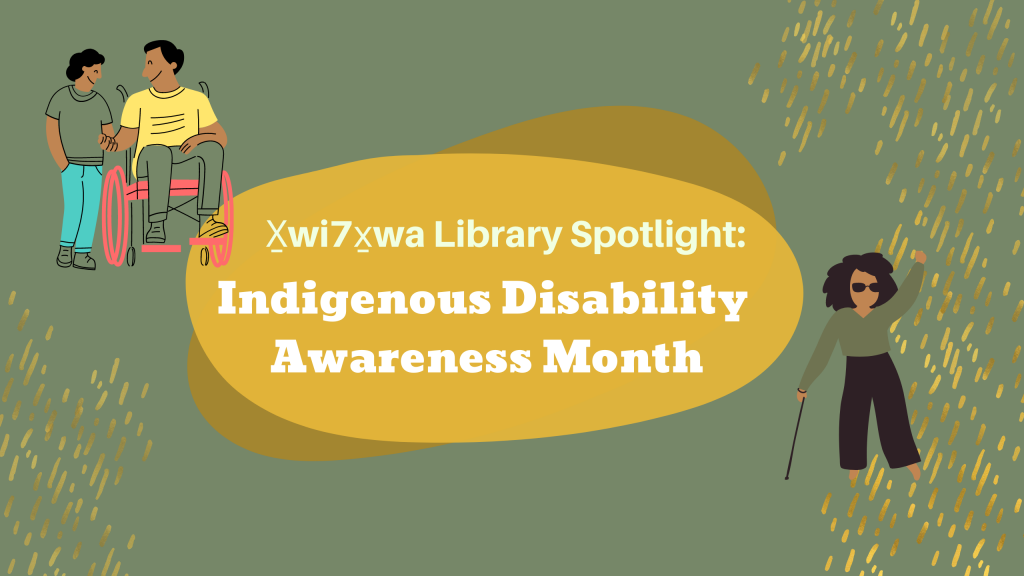
November 2020 is the 6th anniversary of Indigenous Disability Awareness Month in B.C. and across Canada. The B.C. Aboriginal Network on Disability Society notes that “Indigenous people in Canada experience a disability rate significantly higher than that of the general population. Indigenous Disability Awareness Month (IDAM) brings awareness of these barriers and issues that Indigenous peoples and their families living with disabilities face every day. More importantly, we celebrate their achievements and recognize the significant and valuable contributions they make to our communities socially, economically, and culturally.”
In relation to Indigenous Disability Awareness Month X̱wi7x̱wa Library hoped to produce a booklist of #ownvoices fiction, non-fiction and scholarly sources related to Indigenous experiences of disability. After searching UBC’s scholarly resources, Twitter, GoodReads, Google, we found a gap in fiction, non-fiction and scholarly writing on this topic.
We’d love to hear from you: what are your recommendations for #ownvoices reading or media about Indigenous experiences of disability? Email us at xwi7xwa.library@ubc.ca!
At UBC, the Crane Library is available to support students with disabilities through the Centre for Accessibility.
Researching Disability and Indigeneity
The language used to define and discuss disability, or differing abilities, is often context dependent and especially so in Indigenous communities. Beliefs about wellness and unwellness are different from community to community and often expanded to include the impact of colonization. Research about disability and Indigenous people is limited but is located primarily at the intersection of Disability Studies and Indigenous Studies, although it could encompass other areas of study (e.g.: education, social work, occupational therapy). Please bear in mind that some of the terminology used to do research about disability and Indigeneity may be outdated.
Start your research using the UBC catalogue or Summon. Please visit X̱wi7x̱wa Library’s First Nations and Indigenous Studies research guide for more information about doing research. Please email xwi7xwa.library@ubc.ca for additional research support.
Useful keywords for searching UBC Summon and databases might include:
Combine keywords related to Indigenous identity with keywords about your topic. For example: Indigenous AND disability
- Indigenous
- Aboriginal
- race
- disability / disabilities
- accessibility
- ableism
- wellness
- Terminology specific to different abilities (deaf, deafened, Sign Language, Indigenous Sign Language, etc.)
- Terminology specific to Indigenous communities (Cree, Métis, Inuit, etc.)
See X̱wi7x̱wa Library’s “First Nations and Indigenous Studies” guide for additional information about searching using keywords and finding Indigenous perspectives.
Some useful subject heading for searching UBC Summon might include:
(Native people with disabilities)
(“Aboriginal Canadians” AND Disabilities)
(“Disabled people” AND “Native American studies”)
Useful journals and other e-resources might include:
Journal of Literary & Cultural Disability Studies
Core Indigenous Studies journals
Indigenous health databases and statistics
Fiction and Non-Fiction
Below, you’ll find some adult and children’s books written by self-identified Indigenous authors with disabilities, Indigenous literature with differently abled characters, and books on the topic of disability. Unless otherwise noted, all books listed are available at a UBC Library for currently registered students, faculty and staff. For community borrowers, please check for these books at your local public library. If your library does not carry a book that you want, you can often request the library purchase it.
Adult Books & Media
Heart Berries: a memoir by Theresa Marie Mailhot: In this memoir, Mailhot chronicles her experience living with chronic mental illness.
“Seed Children” by Mari Kurisato in Love After the End. Love After the End is a new two-spirit, Indigiqueer science fiction/fantasy anthology, currently available as an ebook with the physical book on order at Vancouver Public Library.
Indian Sign Language by William Tomkins: An unabridged and corrected re-publication of the 1931 fifth edition of the work originally published by the author in San Diego, California under the title Universal Indian Sign Language of the Plains Indians of North America.
My Sister by Thirza Cuthand and Danielle Ratslaff (streaming media): Two thoughtful young friends openly discuss their relationship with their sisters, both of whom have intellectual disabilities.
You Don’t Have to Say You Love Me by Sherman Alexie: In this 2017 memoir, the author recounts his childhood hydrocephaly, alcoholism and bipolar disorder.
All the Weight of Our Dreams: On Living Racialized Autism: “Delve into poetry, essays, short fiction, photography, paintings, and drawings in the first-ever anthology entirely by autistic people of color, featuring 61 writers and artists from seven countries. The work here represents the lives, politics, and artistic expressions of Black, Brown, Latinx, Indigenous, Mixed-Race, and other racialized and people of color from many autistic communities, often speaking out sharply on issues of marginality, intersectionality, and liberation.” Available at Vancouver Public Library.
My only daughter : Karina Beth-Ann Wolfe / producer/director, Grace Smith: “Carole Wolfe, a deaf Indigenous woman in Saskatoon, bravely shares the story of her daughter’s disappearance in 2010. Told in American Sign Language.”
Children’s Books
Native Athletes in Action! By Vincent Schilling (for middle grade ages): In Chapter 3, readers meet Cheri Becerra-Madsen (Omaha) a wheelchair racing Olympian and world record holder who lost use of her legs at age 3.
Tribal Journey by Gary Robinson (for middle grade ages): “Sixteen-year-old Jason is left with a paralyzed leg after a car accident and it is only after becoming involved with his Duwamish mother’s tribe and learning to “pull” a canoe that he begins to see himself as more than a boy in a wheelchair.”
Spirit Bear and Children Make History (for elementary grade ages): “Hello! My name is Sus Zul in the Carrier language. In English, people call me Spirit Bear. I am a proud member of the Carrier Sekani Tribal Council. I am on my way to Ottawa, Ontario, to witness a very important human rights case. Would you join me on this journey?” When Spirit Bear’s mom tells him about an important human rights case happening in Ottawa, Ontario, he makes the LONG trip (by train, his favourite way to travel) to go and watch, and to stand up for First Nations kids. And he isn’t the only one! Lots of children come too — to listen, and to show they care. Spirit Bear knows that children can change the world because he’s there to see it happen. This is the story of how kids — kids just like you — made a difference … with a bit of help from some bears and other animals along the way!”
Collection Spotlight: A Children’s Booklist for Orange Shirt Day
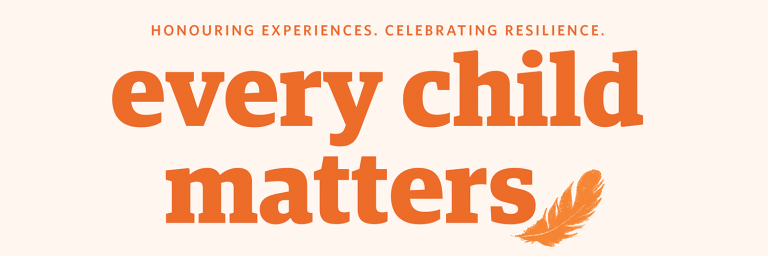
Between the late 1800s and 1996, more than 150, 000 First Nations, Métis and Inuit children attended Indian Residential Schools. Orange Shirt Day, September 30th, was inspired by the story of Survivor Phyllis Webstad and honours the experiences of all children impacted by the Residential Schools.
On September 30th join X̱wi7x̱wa Library in the conversation about Orange Shirt Day by reading a book from our curated children’s book list about residential schools. Below are 5 additional children’s books related to Orange Shirt Day and Residential Schools.
See X̱wi7x̱wa Library’s “Indian Residential School System in Canada” research guide for more resources and research advice. Please email xwi7xwa.library@ubc.ca for additional research help or questions about borrowing material from the Library.
The Indian Residential School History and Dialogue Centre (IRSHDC) at UBC will host several Orange Shirt Day events and workshops this year, starting on September 22 with a talk from Phyllis Webstad, author of “The Orange Shirt Story.” To learn more about events and the inspiration for Orange Shirt Day, visit the IRSHDC’s website.
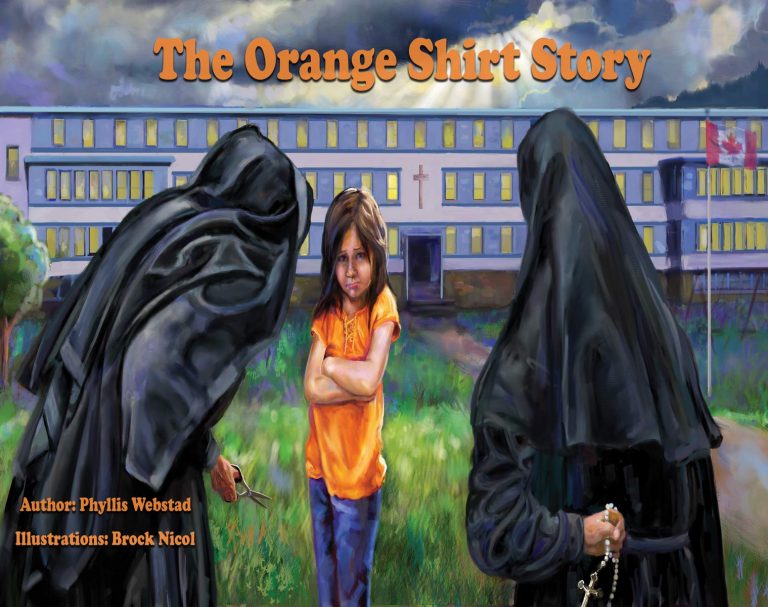
The Orange Shirt Story by Phyllis Webstad.
“The Orange Shirt Story” is based on Phyllis Webstad’s personal experience attending residential school. For her first day at residential school, Phyllis wore a bright orange shirt given to her by her grandmother. When she arrived at the school, teachers immediately took her orange shirt and Phyllis never saw the orange shirt again. Since then, the colour orange has always reminded Phyllis of her traumatic experience at residential school and her orange shirt has become a symbol for honouring the legacies of children who attended Indian Residential Schools.
This title includes a teacher’s lesson plan and additional teaching resources. The Orange Shirt Story is also available in French and Shuswap.
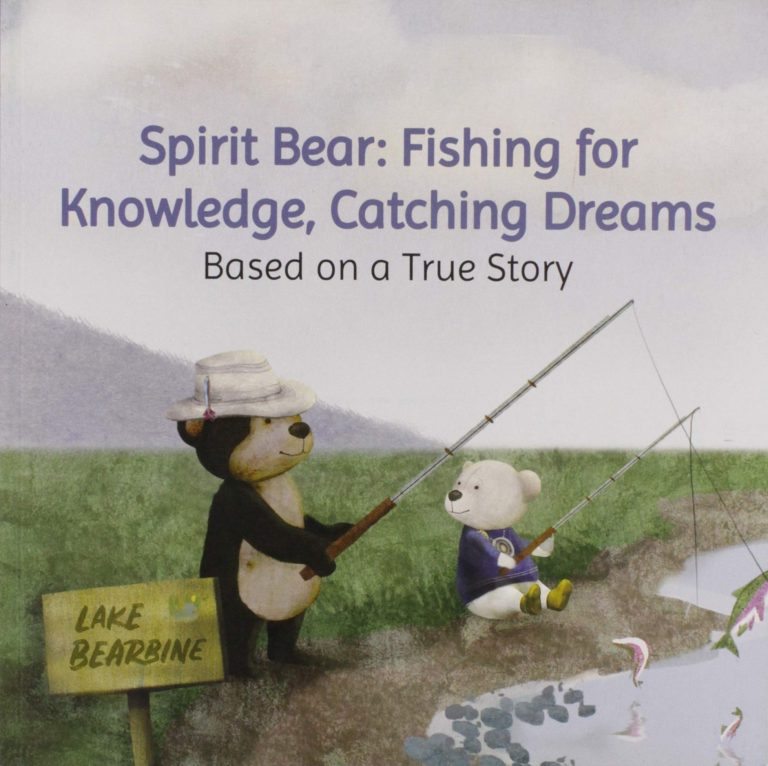
Spirit Bear is off on another adventure! Follow him as he learns about traditional knowledge and Residential Schools from his Uncle Huckleberry and his friend, Lak’insxw, before heading to Algonquin territory, where children teach him about Shannen’s Dream. Spirit Bear and his new friends won’t stop until Shannen’s Dream of “safe and comfy schools” comes true for every First Nations student.”
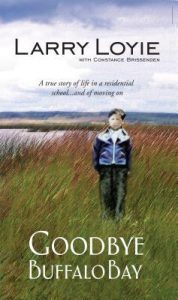
“Goodbye Buffalo Bay” by Larry Loyie with Constance Brissenden
“The sequel to the award-winning book As Long as the Rivers Flow and the award-finalist When the Spirits Dance , Goodbye Buffalo Bay is set during the author’s teenaged years. In his last year in residential school, Lawrence learns the power of friendship and finds the courage to stand up for his beliefs. He returns home to find the traditional First Nations life he loved is over. He feels like a stranger to his family until his grandfather’s gentle guidance helps him find his way. Goodbye Buffalo Bay explores the themes of self-discovery, the importance of friendship, the difference between anger and assertiveness and the realization of youthful dreams.”

“From award-winning authors Richard Van Camp and Monique Gray Smith come two honest and memorable middle-grade novellas on residential schools and reconciliation. The novellas will be bound together in a ‘flip-book’ format, which offers the intended audiences two important perspectives in one package. This stunning and unique book will feature two covers: Lucy & Lola will include a cover and spot illustrations by renowned artist Julie Flett. When We Play Our Drums, They Sing! will feature cover photographs by Tessa MacIntosh.” For ages 9-13.
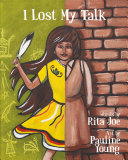
“I Lost my Talk” words by Rita Joe and art by Pauline Young
“One of Rita Joe’s most influential poems, “I Lost My Talk” tells the revered Mi’kmaw Elder’s childhood story of losing her language while a resident of the residential school in Shubenacadie, Nova Scotia. An often quoted piece in this era of truth and reconciliation, Joe’s powerful words explore and celebrate the survival of Mi’kmaw culture and language despite its attempted eradication. A companion book to the simultaneously published I’m Finding My Talk by Rebecca Thomas, I Lost My Talk is a necessary reminder of a dark chapter in Canada’s history, a powerful reading experience, and an effective teaching tool for young readers of all cultures and backgrounds. Includes a biography of Rita Joe and striking colour illustrations by Mi’kmaw artist Pauline Young.”
Say Goodbye to Daily Overdue Fines!
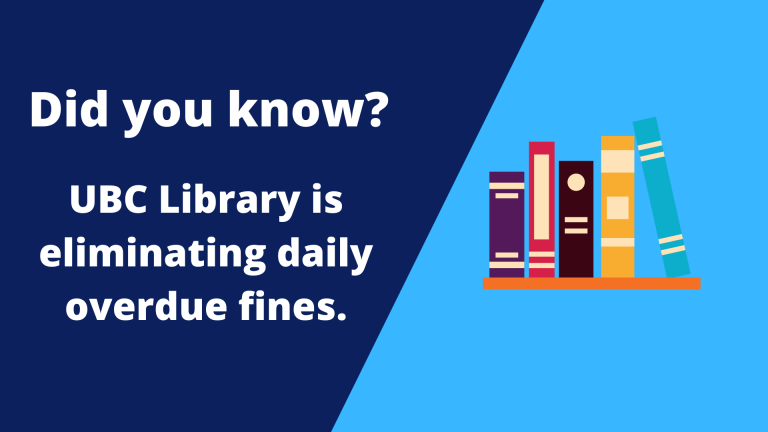
Starting September 15 2020, UBC Library is eliminating daily overdue fines on books, journals and audio-visual (AV) materials for all library users. Here are some other important points about the Library’s update on overdue fines:
- Overdue fines for Course Reserve loans, Interlibrary loans and electronics will still apply when physical borrowing resumes.
- Fines for overdue recalled items will remain in effect. Fines on a recalled item will accumulate once the item becomes overdue.
- For overdue items that are not listed as Course Reserves and are not recalled, no overdue fines will accumulate for 28 days. Once an item is 28 days overdue, it will be deemed lost and a lost charge notice will be sent. If the item is returned, the lost charge will be dropped.
See UBC Library’s full announcement for complete information about changes to overdue fines. Please contact UBC Library Borrower Services or X̱wi7x̱wa Library Borrower Services with any questions or concerns about borrowing material or overdue fines.
Interested in learning more about library fine reduction and abolition? Check out these news articles:
- Bowman, E. (2019, November 30). ‘We wanted our patrons back’ — Public libraries scrap late fine to alleviate inequity. NPR.
- EBSCOpost. (2019, February 27). Not so fine with library fines? A look at the overdue debate. EBSCO Information Services.
- Poon, L. (2019, October 2). Why libraries are eliminating late fees for overdue books. BloombergCityLab.
Doing research about library overdue fines policies? Check out some of these selected resources to get started, but book a reference appointment for additional research help:
- Ajayi, N. A., & Okunlola, A. A. (2005). Students’ perception of fine increases for overdue library books in an academic library. Journal of Librarianship and Information Science, 37(4), 187-193. doi:10.1177/0961000605057850
- Crist, B., & DePriest, M. (2018). Removing barriers to access: Eliminating fines and fees for a win-win for your library and teens: Discover approaches to eliminating fines and fees for youth in your library. Young Adult Library Services, 17(1), 14.
- Davies, R., & Sen, B. (2014). Overdue books at Leeds University Library. Journal of Librarianship and Information Science, 46(3), 226-242. doi:10.1177/0961000613486826
- Helms, C. (2019). Eliminating overdue fines for undergraduates: A six-year review. Journal of Access Services, 16(4), 173-189. doi:10.1080/15367967.2019.1668793
Xwi7xwa Spotlight: Poetry Ebooks
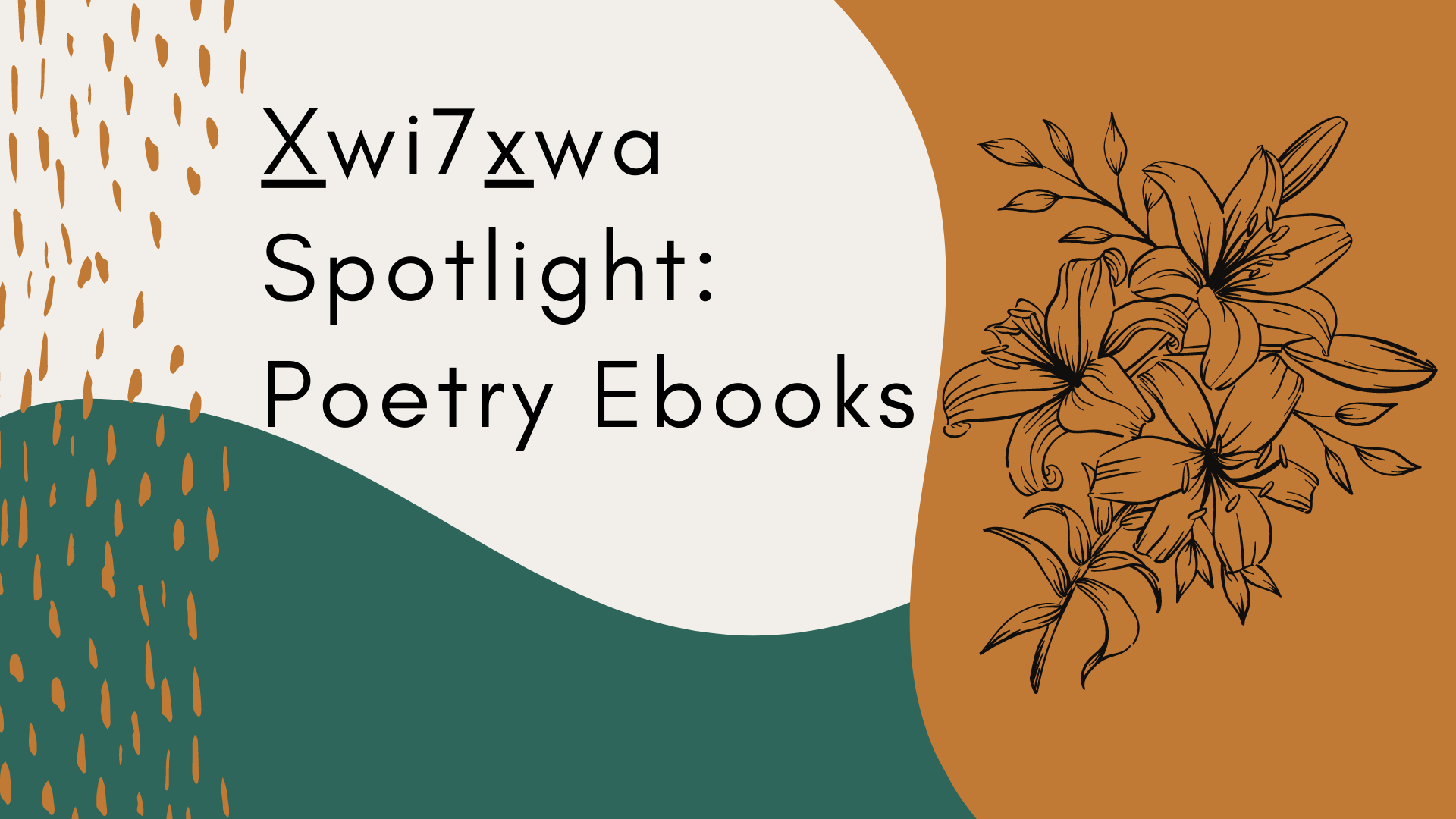
As Autumn begins at the same time as classes and longer nights, books of poems can help settle your mind as the day winds down. Below we’ve picked out a few books of poems that are available through Xwi7xwa & UBC Library’s online collection. If you’re looking for a physical copy of a book of poems or any other physical book, check out how to pick up physical materials at UBC campus and follow their easy steps.
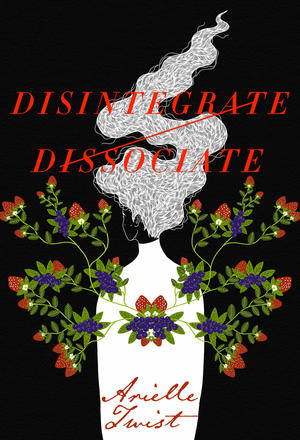 Disintegrate/Dissociate: Poems by Arielle Twist unravels the complexities of human relationships after death and metamorphosis. In these spare yet powerful poems, she explores, with both rage and tenderness, the parameters of grief, trauma, displacement, and identity.
Disintegrate/Dissociate: Poems by Arielle Twist unravels the complexities of human relationships after death and metamorphosis. In these spare yet powerful poems, she explores, with both rage and tenderness, the parameters of grief, trauma, displacement, and identity.
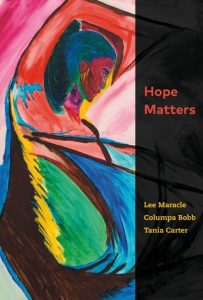
Hope Matters by Lee Maracle, Columpa Bobb, & Tania Carter is a collection of poetry written together as mothers & daughters that focuses on Indigenous history from colonial beginnings to reconciliation.
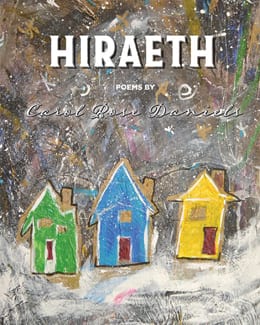
Hiraeth: poems by Carol Rose Daniels is about women supporting and lending strength and clarity to other women so they know that moving forward is always possible– and always necessary. Poems speak to the 1960’s “scoop up” of children and how this affected the lives of (one or thousands) of First Nations and Métis girls– girls who later grew to be women with questions, women with wounds, women who felt like they had no place to call home.
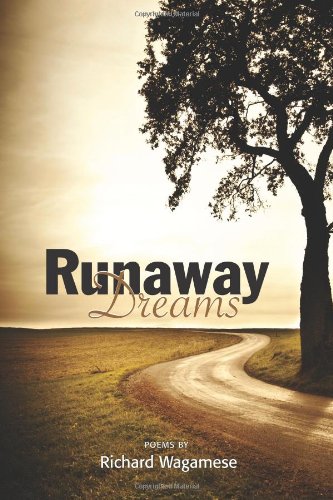
Runaway Dreams by Richard Wagamese describes his life on the road when he repeatedly ran away at an early age, and the beatings he received when the authorities tried “to beat the Indian right out of me”. Through it all, he offers poems of love and music, the language sensuous and tender.
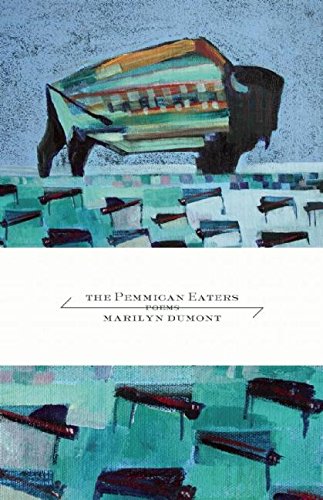
The Pemmican Eaters by Marilyn Dumont aims to recreate a palpable sense of the Riel Resistance period and evoke the geographical, linguistic/cultural, and political situation of Batoche during this time through the eyes of those who experienced the battles, as well as through the eyes of Gabriel and Madeleine Dumont and Louis Riel.
Connections Between Land, Place, People and Culture: 15 Streaming Videos
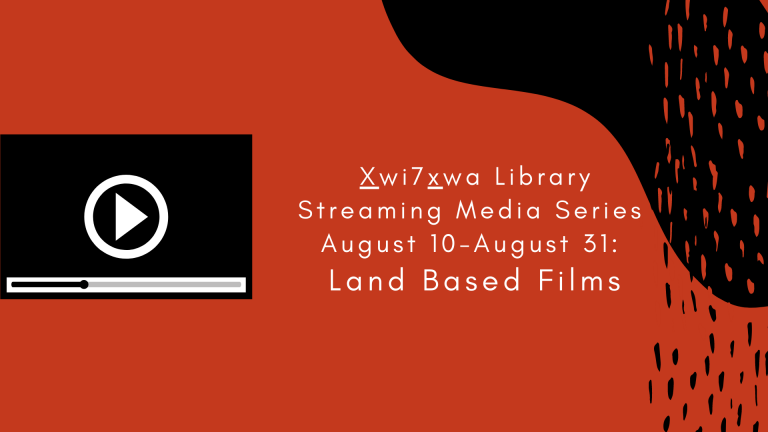
Relationship to the land and traditional territory is often intertwined with government, activism, storytelling, spirituality, art, ceremony, traditional knowledge and other Indigenous cultural expressions. Here are 15 streaming videos that explore the connections between land, place and Indigeneity. Watch these streaming videos any time on McIntyre Media through UBC Library’s catalogue.
Visit X̱wi7x̱wa Library’s Indigenous Land Based Activism research guide for more information, too!
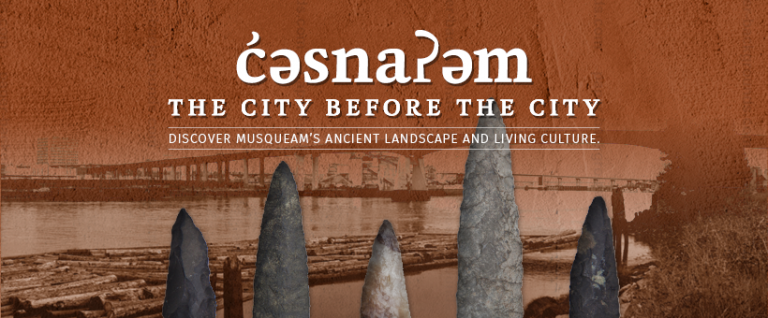
Source: Museum of Vancouver (https://museumofvancouver.ca/csnam-the-city-before-the-city)
cə̓snaʔəm, the city before the city: Directed by Elle-Máijá Tailfeathers, cə̓snaʔəm, the city before the city commemorates five years since the resolution of a dramatic and compelling moment in the history of this place now known as Metro Vancouver. In late 2011, the Musqueam First Nation learned that a 108-unit condo development was being planned at one of their ancestral village sites without prior consultation with the nation. Not long after discovering the news of the planned condo development, Musqueam learned that ancestral remains were unearthed during an archeological “investigation” prior to development.
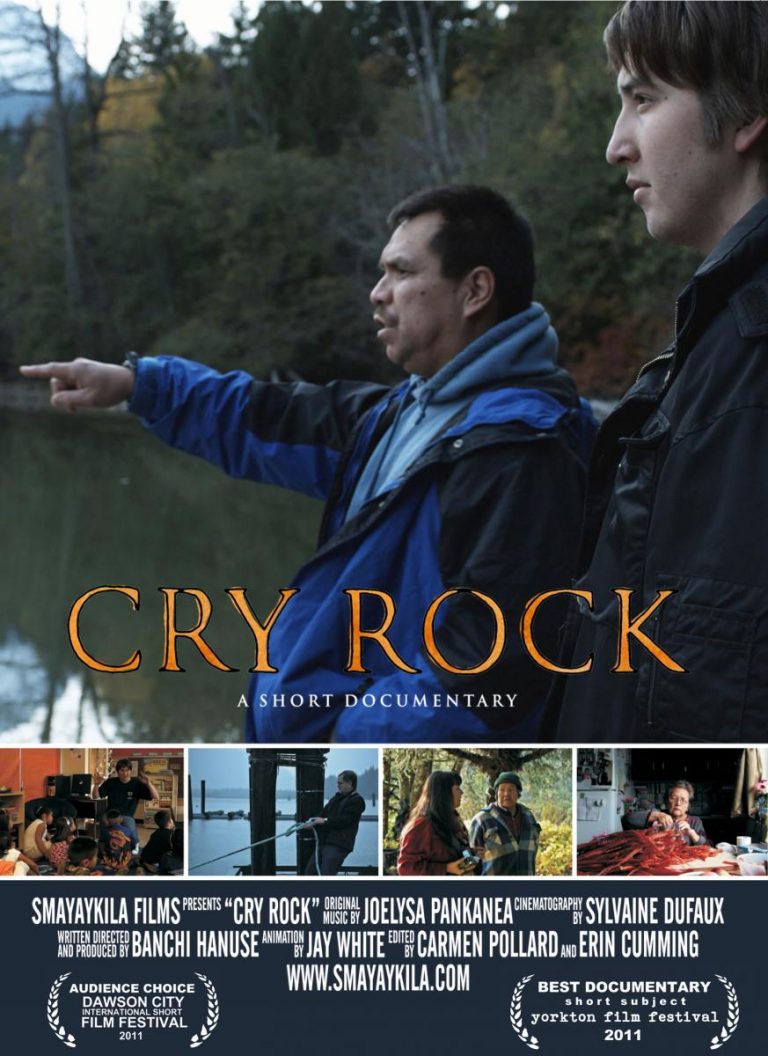
Source: IMBd (https://www.imdb.com/title/tt1679175/)
Cry Rock: The wild beauty of the Bella Coola Valley blends with vivid watercolor animation illuminating the role of the Nuxalk oral tradition and the intersection of story, place and culture. In English and Nuxalk.
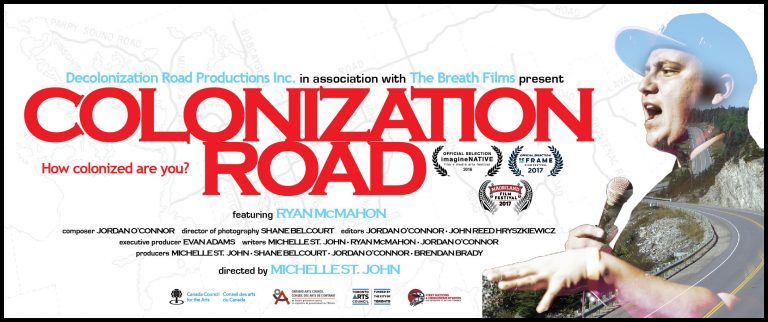
Source: Colonization Road website (https://www.colonizationroad.com)
Colonization Road: Since Europeans arrived on these shores, roads have been built to bring settlers across the country, connect them with resources to create industry and ultimately to establish a nation. Many of these interconnecting networks are called Colonization Roads. For Indigenous peoples, these roads embody a powerful and ironic reality; colonization is still so powerful, we name our roads after it. Join Anishinaabe comedian, Ryan McMahon as he travels across Ontario learning about Colonization Roads, the ways in which they have dispossessed Indigenous people of land and access to traditional territories while creating space for settlers in the colonial experiment that has become Canada.
Dehcho Ndehe Gha Nadaotsethe “Fighting for Our Land”: Dehcho Ndehe Gha Nadaotsethe “Fighting for Our Land” tells the history of the land, people and culture of Denendeh from pre-contact up to the present. In the video, our history is spoken by many different voices from all of the communities in the Dehcho, This community based video was initiated by the Dehcho First Nations and produced and directed by Rebecca Garrett. The goal of the project was to inform and educate, and to promote unity within Dehcho First Nations communities.
Estuary: Estuary is a compositional work by Tyler Hagan (Métis) shot on super 16mm that takes the viewer into a pensive cinematic state where they are allowed to view a familiar environment – a river landscape – in a completely new way. Shot at the mouth of the Fraser River, in Steveston, B.C., Canada.
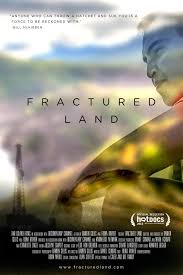
Source: Fractured Land website (http://www.fracturedland.com/press.html)
Fractured Land: With some of the world’s largest fracking operations on his territory, a young Indigenous leader and lawyer confronts the fractures within his community and himself as he struggles to reconcile traditional teachings with the law to protect the land.
How A People Live: Documentary of the Gwa’sala-‘Nakwaxda’xw Nation, which the Canadian government forcibly relocated from its traditional territories on the coast of British Columbia in 1964.
In the Similkameen: In the Similkameen is a short experimental film which interrogates ideas of landscape and place by placing the viewer in the position to engage with the experience of being. Set on the Lower Similkameen Indian Reserve lands in the Southern Okanagan, the central conflict of the work subtly exists between the ‘natural’ landscape and ‘man-made’ incursions–namely a turn of the 20th Century missionary chapel, St. Ann’s. While the church and its relationship to its surroundings represent the larger history of conflict between the smelqmix people of the syilx (Okanagan) nation and Canadian settlers, In the Similkameen focuses on the visceral impact that it has as a part of the landscape. As Upper Similkameen Elder Ramona Allison related to me what her father had told her as a child, “We used to pray under the trees. Then the white man came, cut ’em all down, and now we pray in the trees.” This perspective reminds us that the dichotomy of ‘natural’ and ‘man-made’ is a construct of western thought, and encourages us to think, and experience our world as whole–as an ecosystem. In the Similkameen is the expression of attempting to embody such a perspective. It is an invitation to look, to listen, and to reflect.
‘Namegan’s om dłu’wans awinagwisex = We are one with the land: Namgis Nation has traditionally lived in the ‘Namgis Valley on the shores of Gwa”ni River, Vancouver Island. In 1997 ‘Namgis Nation have signed a statement of intent to negotiate a modern-day treaty with the federal and provincial governments. This process will provide them with a platform to gain access and control over their land and resources to become a self governing Nation. This film highlights their journey to their land in the summer of 2009.
The Oldest Tree In The World: Interweaving Leanne Simpson’s poetics, song, and stories of the land, while honouring the oldest maple tree in this region of Michi Saagiig Nishnaabeg Territory, “The Oldest Tree in the World” is a love song to the oldest sugar maple in the region, living just outside of Nogojiwanong (Peterborough) in Mark S. Burnham Provincial Park. This grandmother tree, one of our oldest living relations, has lived through over 500 years of history.
On The Line: The Northern Gateway Pipeline Project is a proposal by Calgary’s Enbridge Corporation to construct a 1,170 km oil pipeline from Bruderheim, Alberta to Kitimat, B.C. The pipeline would cross 773 watercourses and bring supertankers to B.C.’s pristine north coast for the first time ever in order to deliver tar sands bitumen to Asian markets. In the summer of 2010, filmaker Frank Wolf and his friend Todd McGowan biked, hiked, rafted and kayaked the GPS track of the pipeline in order to uncover the truth about the proposal. Through the voices of people they meet along the way, their rough and tumble journey reveals the severe risk and consequences associated with this 5.5 billion dollar mega-project
St’at’imchalh: Spirit of the People: The caretakers of the land! Rich with cultural and scenic pictures this beautiful film explores the strength and history of First Nations and how they have managed the land, for thousands of years, as their “garden”. Thru personal interviews and precious archival footage we are delighted to meet the keepers of the garden.
The Fast: The Fast follows Doreen Manuel into the Rocky Mountains for a 4-day no food or water fasting ceremony in search of storyteller power. Doreen has worked for over 20-years to develop the story about her father George Manuel, an Indigenous leader whose leadership and vision could inspire this generation to take Indigenous people into the Fourth World. The stakes are high, the story needs to be told, but Doreen is stuck and unable to tell the story. Listening to the voices of her ancestors, Doreen is guided to the same sacred site where her father participated in ceremony, so that she may start at the beginning. Out of this journey, she discovers the answer is simple but the path is difficult and she lays the spiritual groundwork for her next journey as a filmmaker. – from runninwolf.ca
This Place Is Part Of Our Spirit: Elders and Knowledge keepers share their views on current Archaeology practices. Curve Lake First Nation in Central Ontario are the stewards of the Peterborough Petroglyphs which has been a special spiritual place since time immemorial.
Tu Suhudinh: It’s 2008. Water is the most precious commodity on Earth. A powerful corporation controls most of the resources and is trying to control more. Directed by Helen Haig-Brown.
